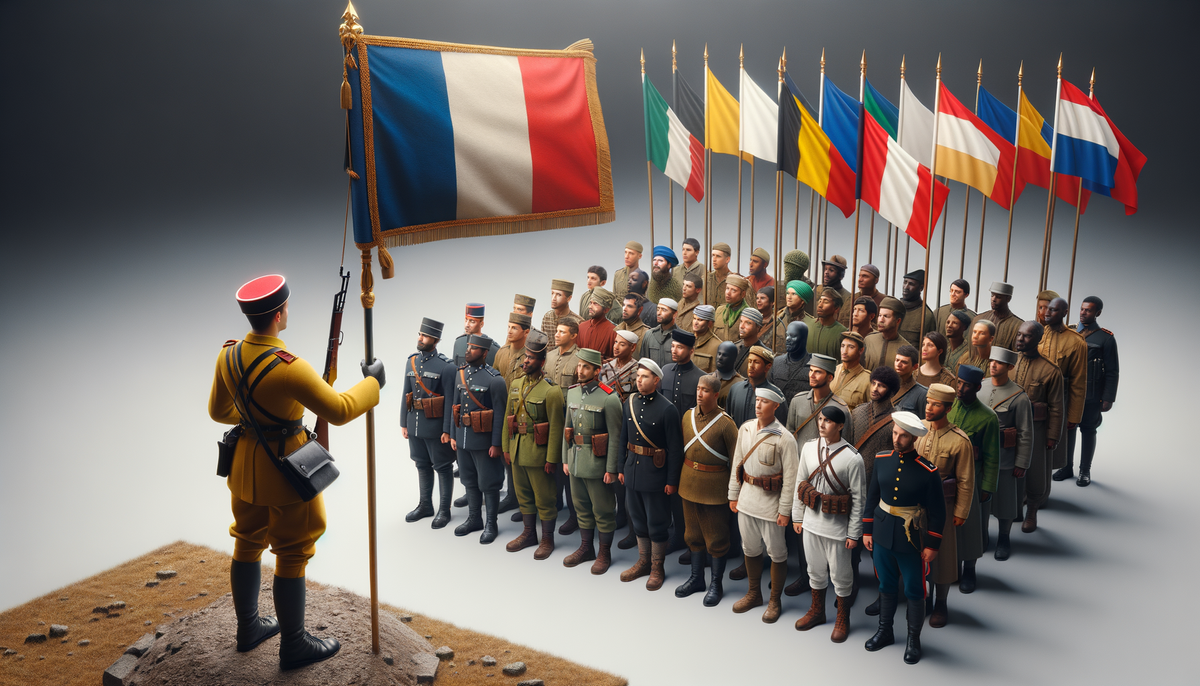Fanion: A Historical Marker and Modern Symbol in Military and Civilian Contexts
Discover the historical and modern significance of the fanion, a pivotal marker with roots in French military tradition.

Fanion: A Historical Marker and Modern Symbol in Military and Civilian Contexts
The term "fanion" may not be widely recognized outside of specific professional circles, but it represents a fascinating convergence of historical tradition and modern application. Originating from the French military, a fanion is akin to the American guidon or the British company colour, used as a positional marker. This small flag has a rich history, originally designed to coordinate military movements[1].
Military Usage and Specifications of the Fanion
Historically, fanions were attached to a small staff that could be inserted into the muzzle of a rifle. They were meticulously sized according to their application with specific measurements for battalion, company, and platoon fanions, ranging from as large as 50 cm x 40 cm to as intricately small as a triangular pennant[1]. This precision reflects the broader military tradition of using visually distinctive markers to organize troops, signaling unit positions and coordinating battle formations.
Broader Applications and Modern Relevance
Today, the utility of fanions extends beyond military confines into civilian applications. Surveyors use fanions as positional markers during field work, underscoring the fanion's versatility and adaptability[2][3]. Soldiers too continue to use fanions for marking positions, highlighting their ongoing relevance in strategic operations.
Etymological Roots and Linguistic Significance
The word "fanion" derives from the Old French "fanon" or "fanonnet" meaning flag, banner, or pennon, with ties back to the Italian "gonfanone". Linguists point to deeper etymological connections to the Latin "fanum," suggesting a historical and perhaps symbolic link to temples or shrines[5]. The term evokes the cultural and historical tapestry of its origins, reflecting a layered linguistic history that enriches its modern usage.
Heraldic Usage and Vexillological Importance
In heraldry, fanions carry additional significance as small rectangular flags bearing coats of arms, often attached to the top of lances or pennons[5]. This heraldic function ties into the broader study of vexillology — the study of flags — which celebrates the diverse forms and functions these symbols have served throughout history.
Practical Takeaways for Professionals
For contemporary professionals, especially those in military and geospatial industries, the fanion's adaptability is a key takeaway. Understanding its historical context enriches its application, whether used as a survey tool or for ceremonial purposes. By acknowledging the fanion's historical roots and present-day functionalities, professionals can leverage this tool effectively in both strategic planning and operational execution.
The concept of the fanion is more than a relic of the past; it is a vibrant part of modern methodology in various fields. Explore how fanion solutions can enhance strategic planning and operations in your field by reaching out to our experts today.




